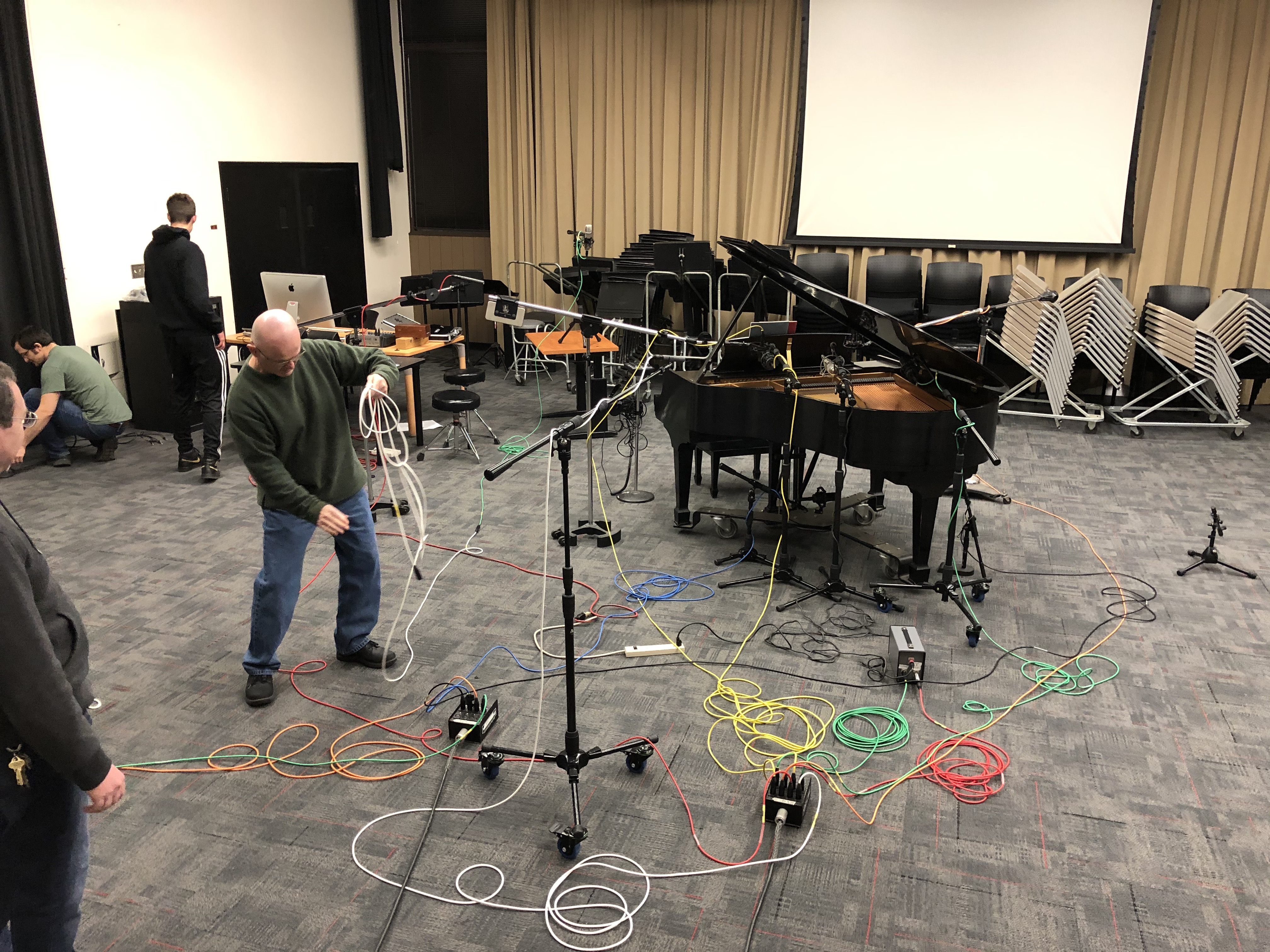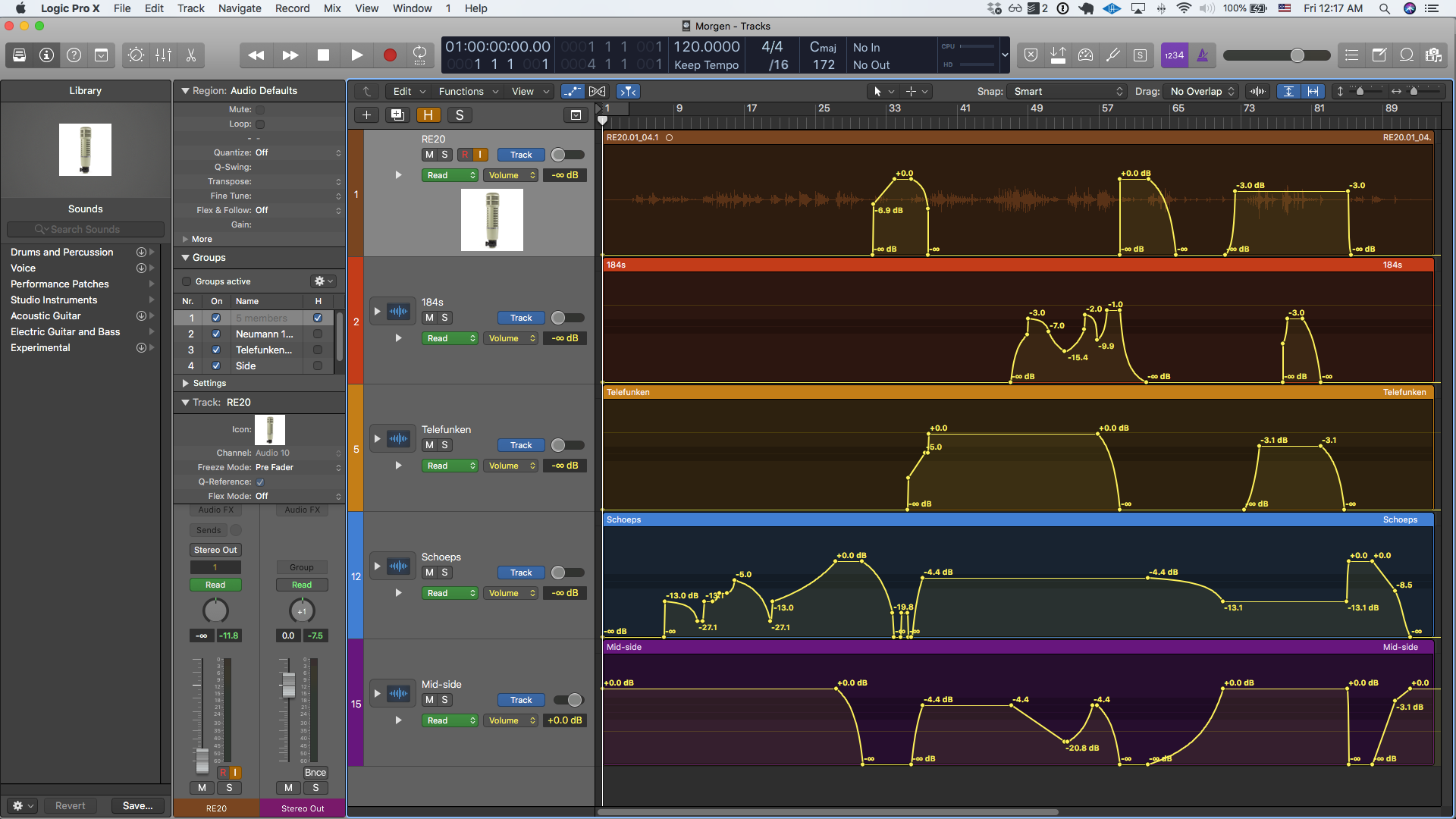Andrew Aday
andrew.aday (at) columbia.edu
Acoustic Orchestrations
Inspired by the acoustic orchestrations of pianist Glenn Gould, I organized a project with classmates at Foothill to experiment with how recording technology could breathe new life into classical piano repertoire.
The idea is to record the piano with a variety of microphones at various positions, and then mix and master the combination of these recordings. Every mic and position carries a distinguished “sound image” of the piano, and by orchestrating these various sonorities together according to the contours of the underlying music, we can add a whole new acoustic dimension to the performance.

During the recording session we wanted to test as many mics and positions as possible. Our final setup had 14 microphones in positions ranging from directly above the hammers, to behind the piano bench, to the farthest corner of the room. Perhaps the most unorthodox was the Electrovoice RE20 which we placed underneath the chasis of the piano, below the bass strings (pictured below).

During mixing I consolidated the recordings down to the following 5 microphones, chosen for the variety and distinctiveness of their sound:
| Microphone | Position | Character |
|---|---|---|
| Electrovoice RE20 | Underneath piano | The most unexpected of all our mics, this one had a remarkably dulcet, intimate sound, very close to the ear. And yet because it was separated from the sound source by a layer of wood, the audio had a muted quality, as if you were listening from another room. |
| Neumann KM 184s | Above hammers | Percussive and biting, useful for adding edge to the sound. |
| Telefunken AR70 | Above strings, under lid | Like gold and honey. The virtuous mean. |
| Schoeps MK 2s | 5ft away | Reverberant like in a hall, but not distant. A spacious sound that still has its body. |
| Neumann U87 + Royer 121 | Far wall | These two mics were our mid-side pair. Ambience and echoes. This one captured more the sound of the room than the piano. |
Without further ado, here are the recordings and their mix sessions! (No EQ, compression, reverb, or any other plugins, just volume automation of the microphones’ natural sounds)
Strauss - Morgen

Scriabin - Desir

I am quite happy with these first couple experiments, and am eager to record+orchestrate more music. This technique is not nearly as subtle as I originally expected, and therefore may not be appropriate for composers such as Bach and Mozart. (Actually, I’m on the fence about Bach. It’s probably worth trying!) But now I hear many ideas for music which could benefit. Some of the music I want to record and orchestrate next include:
- Sibelius Op. 24 no. 7
- Chopin Prelude no. 13
- Bach Italian Concerto, 2nd mov.
- Scriabin Sonata no. 3
- Schumann Waldszenen
- Ravel Valse Nobles et Sentimentales
- Debussy Images